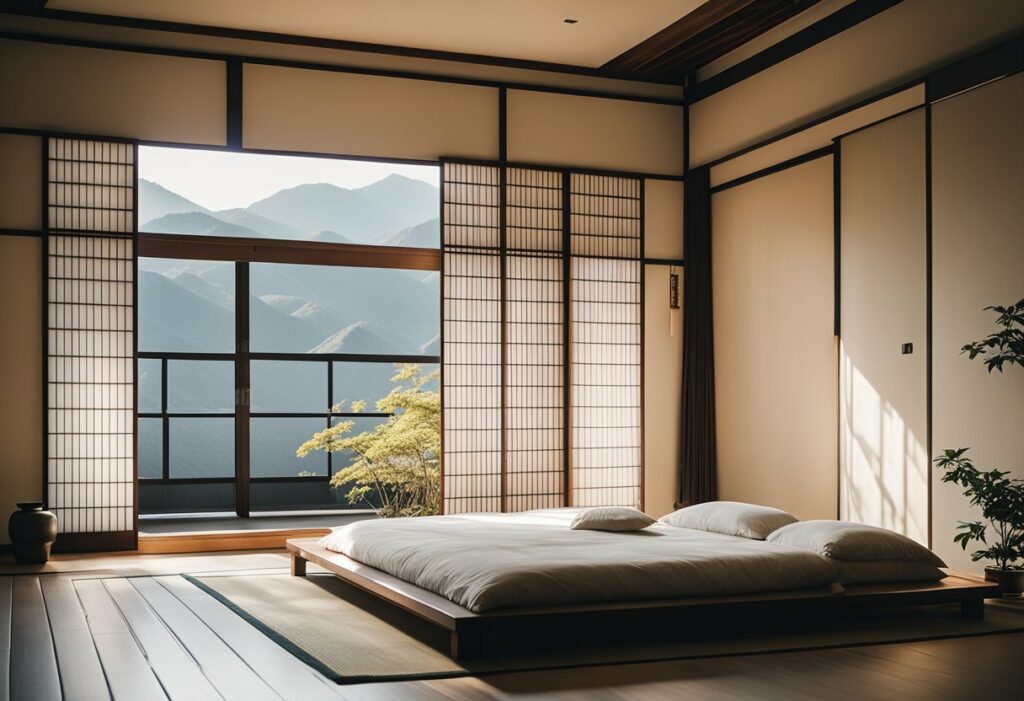Modern Japanese Bedroom Design: A Fusion of Minimalism and Elegance
If you’re looking for a bedroom design that embodies minimalism, simplicity, and zen, then a modern Japanese bedroom might be just what you need. Japanese interior design is unique in that it combines modern comfort and aesthetic beauty with traditional elements. A modern Japanese bedroom design typically features clean lines, neutral colours, and natural materials like wood and bamboo.
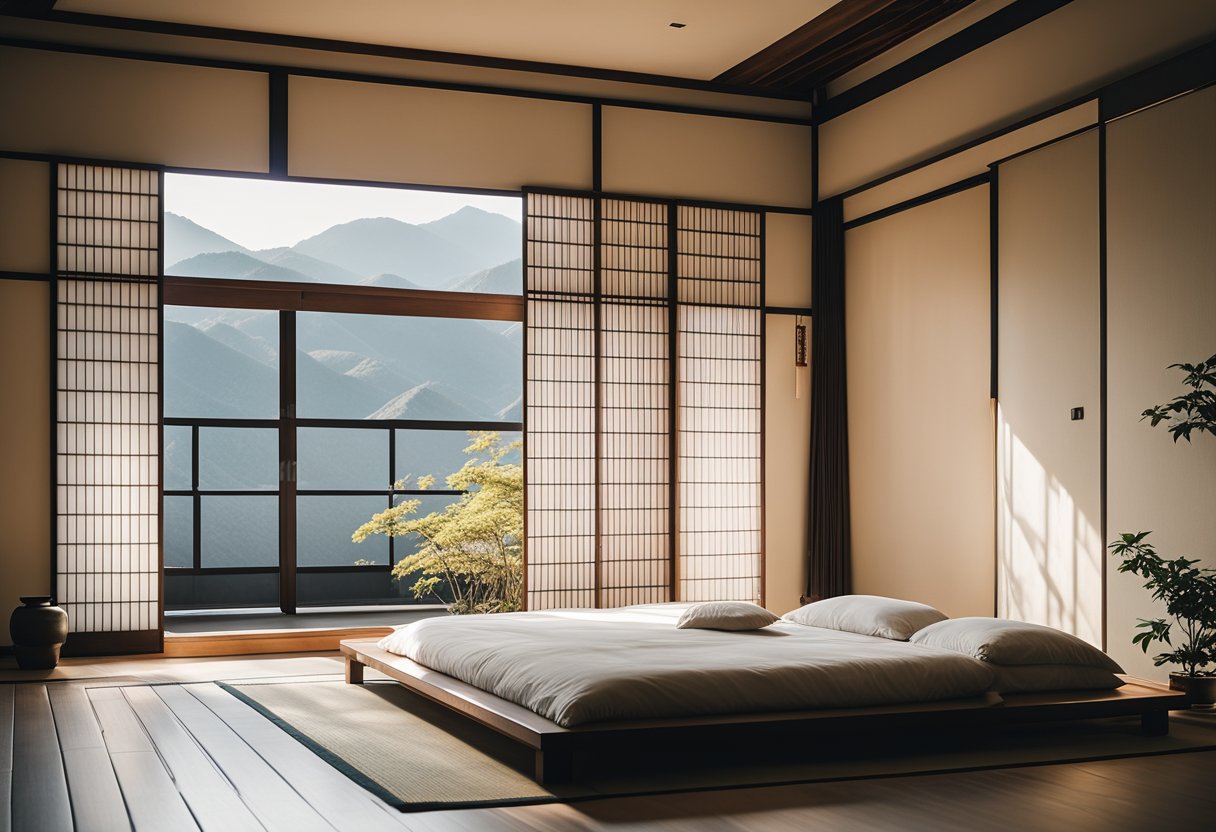
One of the key design elements of a modern Japanese bedroom is the use of space. Japanese design often emphasizes the importance of negative space, or the space between objects. This is why you’ll often see low furniture and minimalist decor in a Japanese bedroom. The idea is to create a calming, uncluttered space that promotes relaxation and tranquility.
While traditional Japanese bedrooms might feature tatami mats and shoji screens, modern adaptations often incorporate more contemporary elements. For example, a modern Japanese bedroom might include a platform bed with a low profile, or a sleek, minimalist desk. However, the overall aesthetic remains true to the principles of Japanese design: simplicity, minimalism, and a focus on natural materials.
Key Takeaways
- A modern Japanese bedroom design combines traditional elements with contemporary aesthetics to create a space that is both beautiful and functional.
- Japanese design emphasizes the importance of negative space, or the space between objects, to promote relaxation and tranquility.
- While modern adaptations of Japanese design may incorporate more contemporary elements, the overall aesthetic remains true to the principles of simplicity and minimalism.
Design Elements and Aesthetics
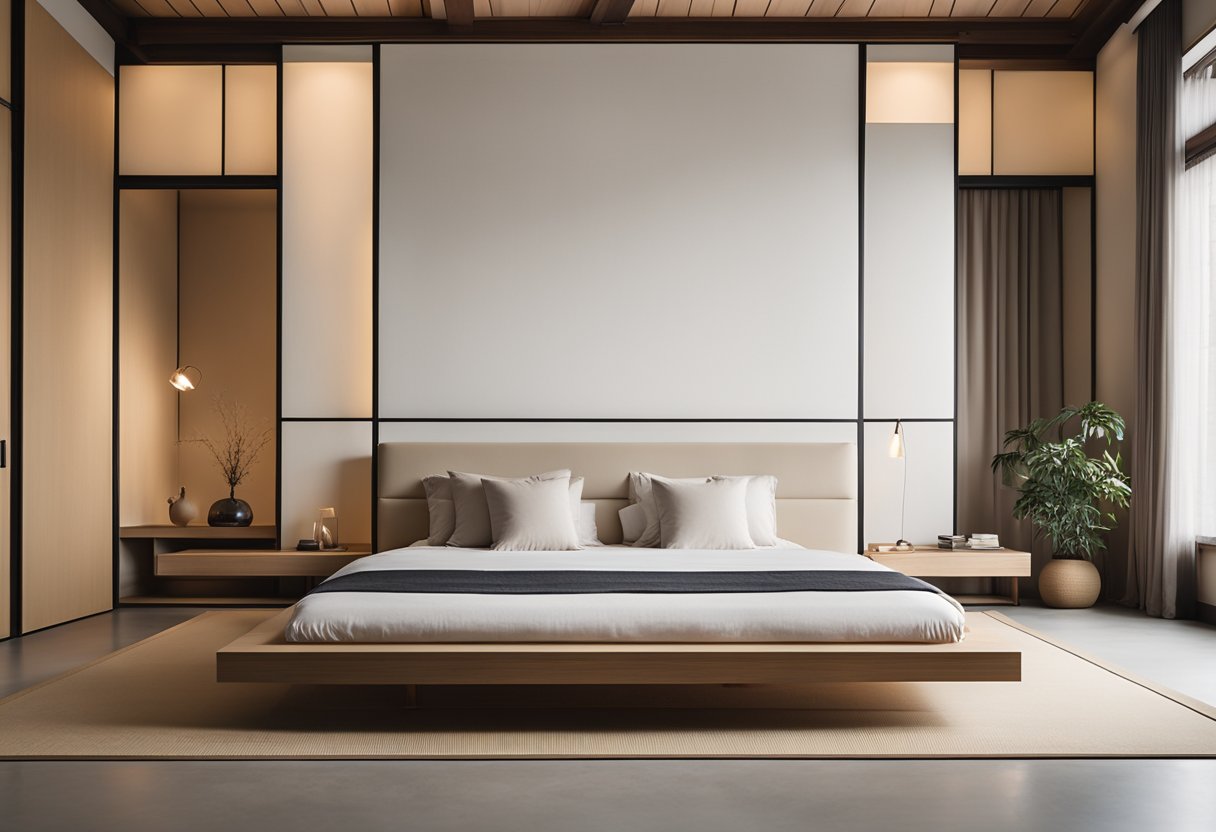
When it comes to designing a modern Japanese-inspired bedroom, there are several key design elements and aesthetics that you should consider. In this section, we will explore some of the most important design elements and aesthetics that can help you create a serene and harmonious space.
Colour and Texture
A minimalist design approach is a hallmark of Japanese-inspired bedrooms. To achieve this aesthetic, you should opt for a neutral color palette that includes earth tones and natural materials. This can include shades of beige, cream, brown, and grey. You can also incorporate textures like bamboo, wood, and linen to add interest and depth to the space.
Furniture and Decor
When it comes to furniture and decorations, Japanese-inspired bedrooms often feature simple, clean lines and natural materials. Consider incorporating Japanese furniture pieces like a low-profile bed frame made of wood. You can also add decorations like bonsai trees and other natural elements to create a calming ambiance.
Space and Functionality
In a Japanese-inspired bedroom, space and functionality are key. To create a clutter-free environment, opt for storage solutions like built-in cabinets and minimalist drawers. This will help keep your space organized and tidy. Additionally, consider incorporating multi-functional furniture pieces like a storage ottoman or a bed with built-in storage to maximize your space.
Overall, designing a modern Japanese-inspired bedroom is all about balance. By incorporating natural materials, a neutral color palette, and minimalist design elements, you can create a serene and calming space that is both functional and beautiful.
Cultural Significance and Modern Adaptations
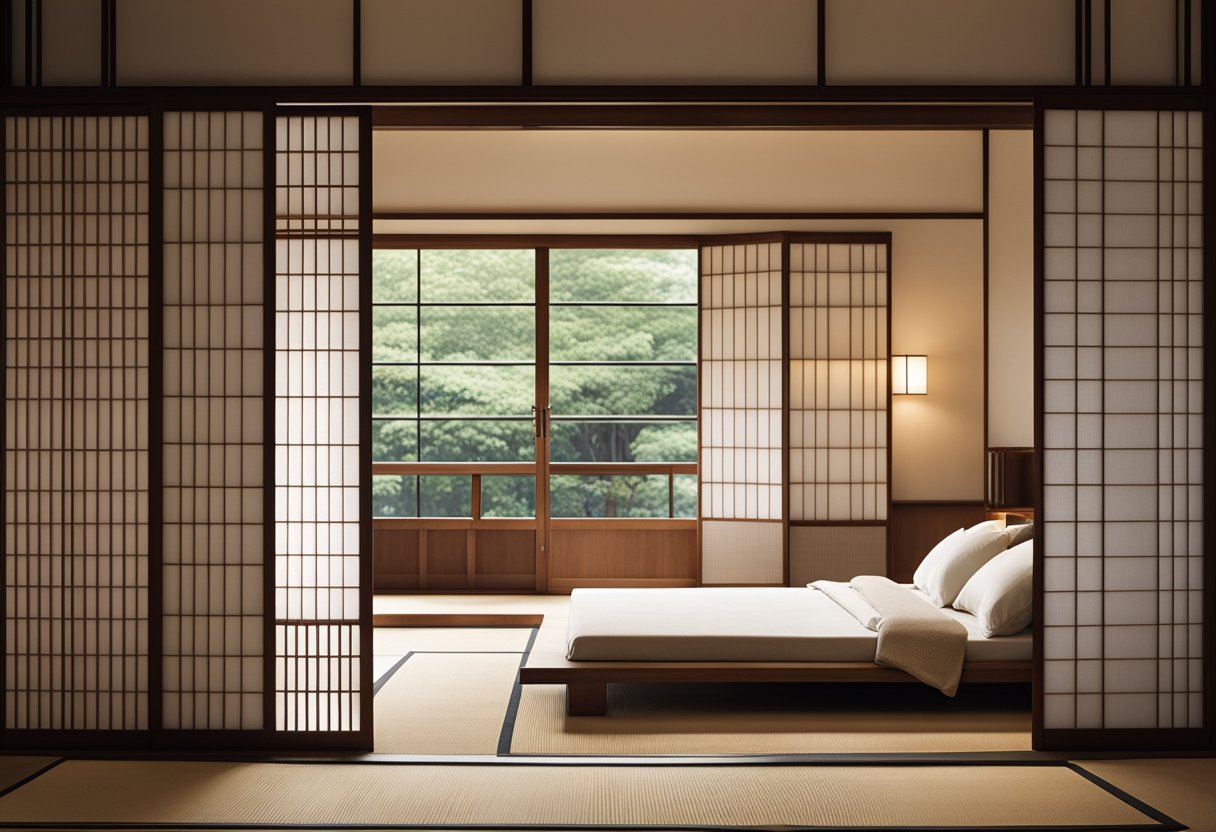
When it comes to modern Japanese bedroom design, the blend of traditional influences and modern innovations creates a captivating and serene atmosphere.
Traditional Influences
In traditional Japanese interior design, elements such as tatami mats, shoji screens, and the use of natural materials like wood and paper are integral. The concept of minimalism, influenced by Japanese culture, is also prominent. The traditional Japanese bedroom is often characterised by simplicity, functionality, and a connection with nature.
Modern Innovations
In modern Japanese bedroom design, there are innovative adaptations that incorporate industrial style, luxurious elements, and a fusion of traditional and modern aesthetics. The use of futons, sliding doors, and a neutral colour palette are key features that continue to define the modern Japanese style. This style aims to create a calming and inviting space, often drawing inspiration from Japanese anime and contemporary design trends.
Frequently Asked Questions
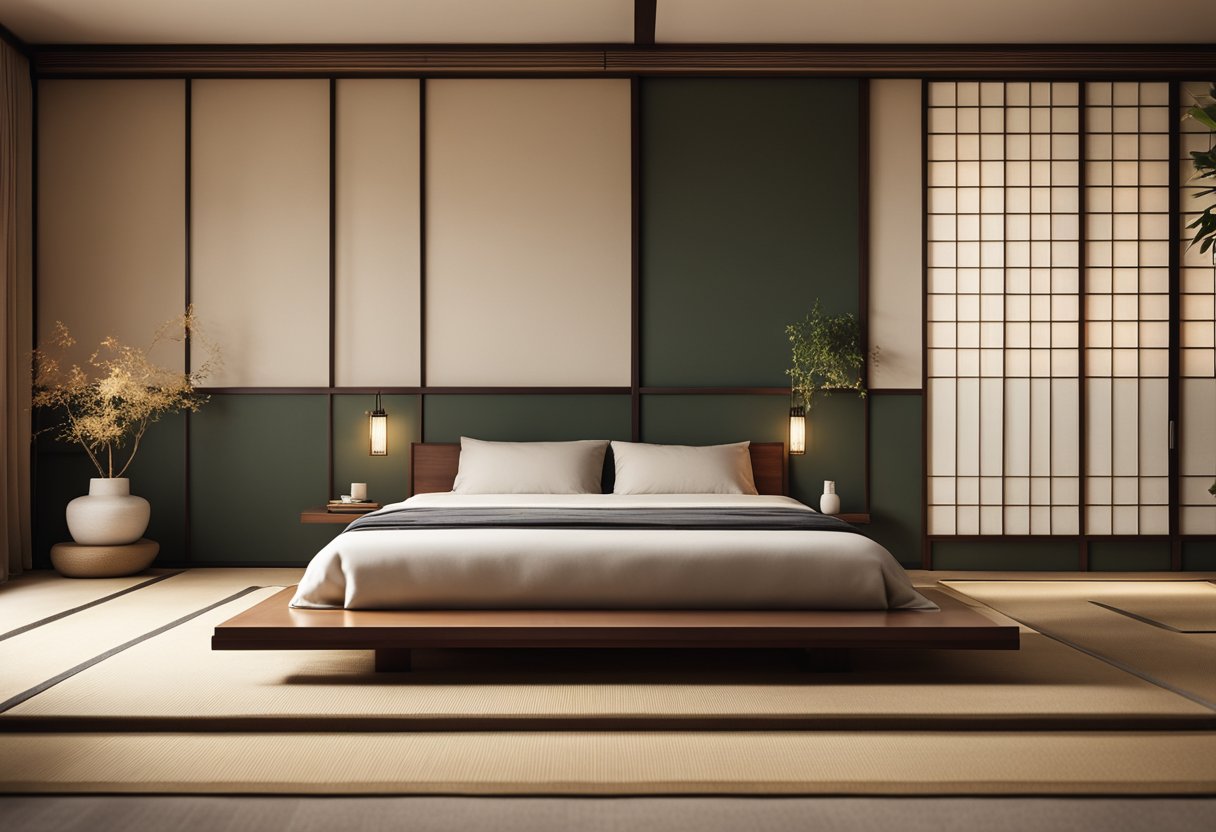
How can you maximise space with a Japanese-inspired bedroom design in compact living areas?
Japanese-inspired bedroom design is perfect for compact living areas because it emphasises minimalism and simplicity. In order to maximise space, it’s important to keep the room uncluttered and use furniture that is functional and multi-purpose. For example, a bed with built-in storage or a low platform bed can help save space. You can also use sliding doors or screens to separate the bedroom from other areas of the home without taking up too much space.
What are the key elements to include in a bedroom to achieve a modern Japanese aesthetic?
The key elements of a modern Japanese bedroom aesthetic are simplicity, minimalism, and a connection to nature. This can be achieved through the use of natural materials such as wood, bamboo, and stone. The colour palette should be subdued and tranquil, with shades of white, beige, and grey. Low furniture, such as a low platform bed, and a lack of clutter are also important elements to include.
Which colour palettes are traditionally used in Japanese bedroom interiors?
Traditionally, Japanese bedroom interiors use a subdued and tranquil colour palette. This includes shades of white, beige, and grey, as well as natural colours such as brown and green. These colours help to create a calming and peaceful atmosphere in the bedroom.
How does one incorporate minimalism effectively into a modern Japanese bedroom setting?
Incorporating minimalism into a modern Japanese bedroom setting involves using only the essentials and keeping the space uncluttered. This can be achieved through the use of multi-functional furniture, such as a bed with built-in storage, and by keeping decorations to a minimum. It’s also important to keep the colour palette subdued and to use natural materials such as wood, bamboo, and stone.
What types of furniture are essential for creating an authentic Japanese-style bedroom?
Low furniture, such as a low platform bed, is essential for creating an authentic Japanese-style bedroom. Other key pieces of furniture include a shoji screen or sliding doors, a tatami mat or a rug made of natural materials, and a low table for tea or other activities. It’s important to keep the furniture simple and functional, with a focus on natural materials and minimalism.
Can you suggest any tips for blending modern and traditional Japanese design themes in a bedroom?
Blending modern and traditional Japanese design themes in a bedroom can be achieved through the use of natural materials, a subdued colour palette, and minimalism. For example, you can use a modern platform bed with traditional Japanese bedding, or a traditional shoji screen with modern lighting fixtures. It’s important to keep the focus on simplicity and functionality, while incorporating elements of both modern and traditional design.

